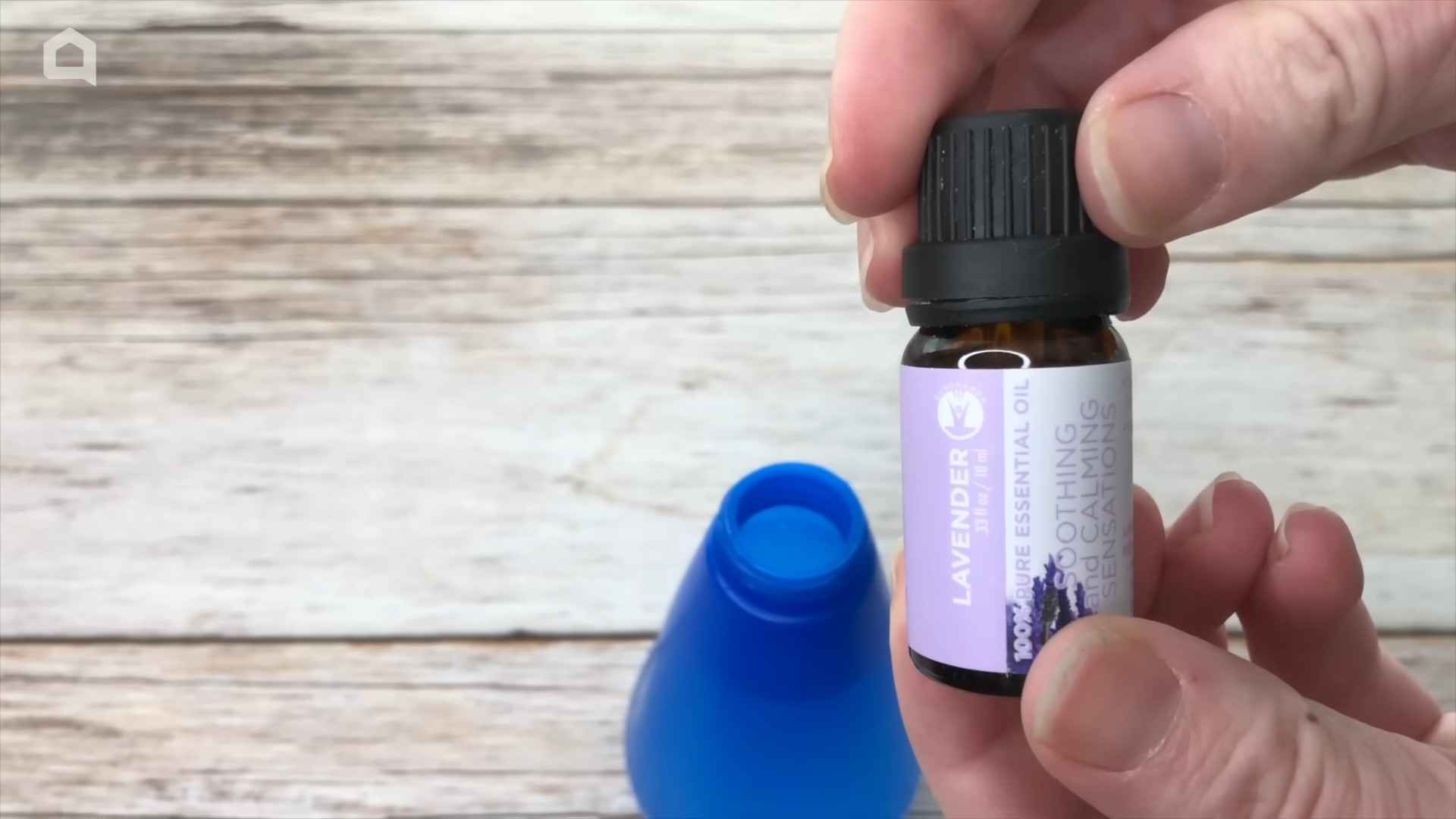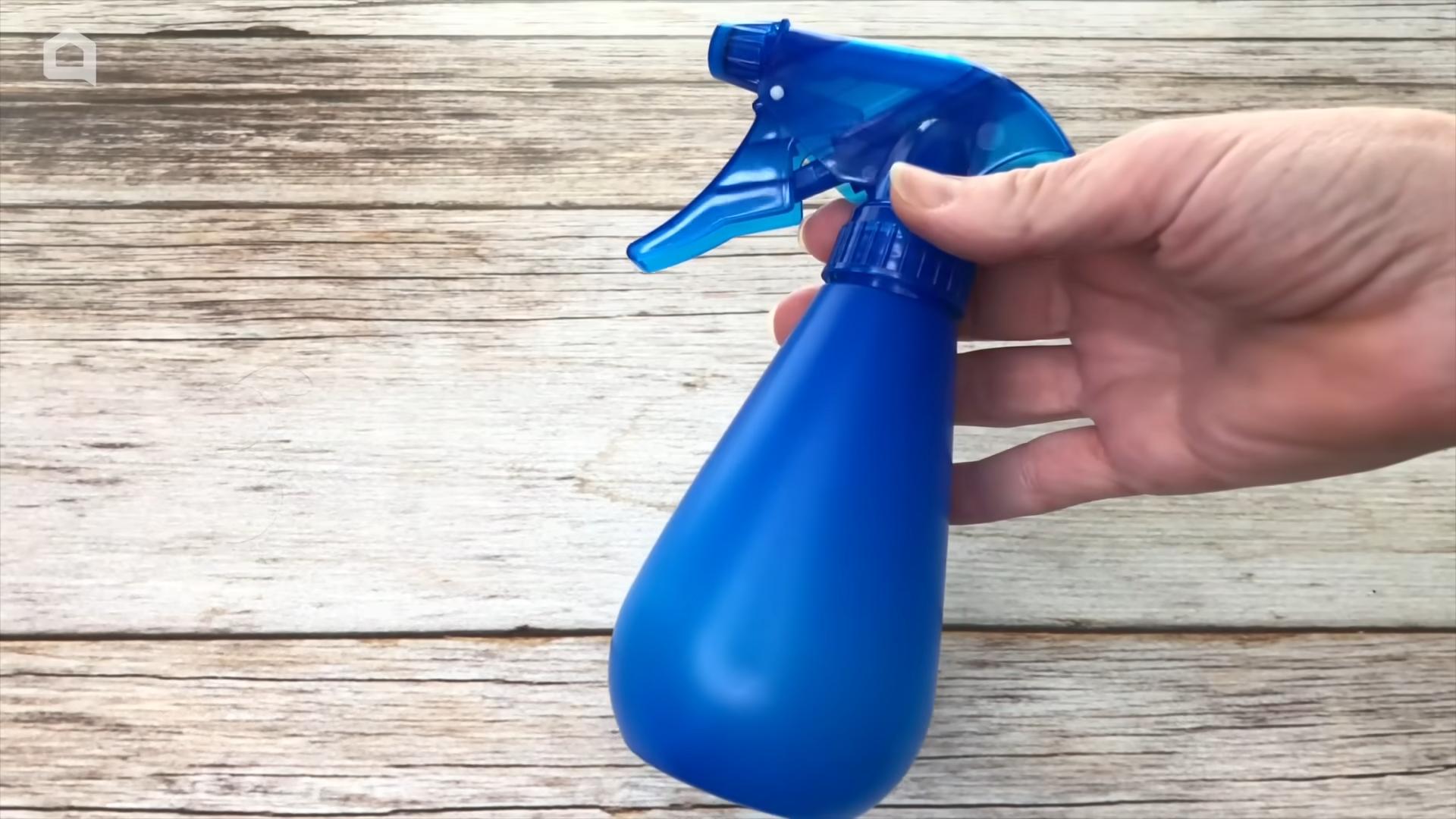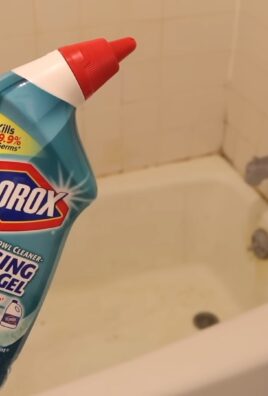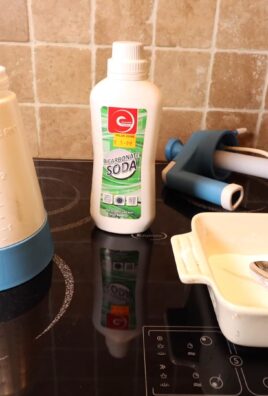Odd cleaning tips – we all need them, right? Let’s be honest, keeping a home sparkling clean can feel like a never-ending battle. You scrub, you dust, you vacuum, and yet, somehow, grime and clutter always seem to creep back in. But what if I told you that the secret to a truly clean home wasn’t about buying expensive products or spending hours scrubbing, but about embracing the wonderfully weird and surprisingly effective world of odd cleaning tips?
For centuries, resourceful homemakers have passed down unconventional cleaning methods, often born out of necessity and a desire to make the most of what they had. Think about it – before the age of mass-produced cleaning solutions, people relied on natural ingredients and clever hacks to keep their homes tidy. These time-tested tricks, often involving everyday items you already have in your pantry, are not only budget-friendly but also surprisingly effective.
In this article, I’m going to share some of my favorite odd cleaning tips and DIY solutions that will revolutionize your cleaning routine. From using vinegar to banish hard water stains to employing baking soda to deodorize your carpets, these hacks will save you time, money, and a whole lot of elbow grease. So, ditch the harsh chemicals and embrace the power of the unusual – your home (and your wallet) will thank you for it!

DIY Cleaning Hacks: Unexpected Solutions for a Sparkling Home
Hey there, fellow cleaning enthusiasts! I’m always on the lookout for clever and unconventional ways to tackle household chores. Forget those expensive, chemical-laden cleaners – let’s dive into some surprisingly effective DIY cleaning hacks using everyday items you probably already have!
Cleaning with Coca-Cola: More Than Just a Drink!
You might be surprised to learn that Coca-Cola isn’t just a sugary beverage; it’s also a surprisingly effective cleaning agent. The phosphoric acid in Coke can break down rust, grease, and even stains.
Cleaning a Toilet Bowl with Coke
This is one of my favorite quick fixes!
* What you’ll need: A can of Coca-Cola.
* Why it works: The phosphoric acid in Coke helps to dissolve mineral deposits and stains.
Step-by-step instructions:
1. Pour it in: Slowly pour the entire can of Coca-Cola around the rim of the toilet bowl, ensuring it coats the entire surface.
2. Let it sit: Allow the Coke to sit in the bowl for at least one hour, or even better, overnight for stubborn stains. This gives the phosphoric acid time to work its magic.
3. Scrub and flush: After the soaking period, use a toilet brush to scrub the bowl thoroughly, paying attention to any stained areas.
4. Flush away: Flush the toilet to rinse away the Coke and the dissolved grime. You should see a noticeable improvement in the cleanliness of your toilet bowl. You might need to repeat this process for really tough stains.
Removing Rust with Coke
Got some rusty tools or fixtures? Coke can help!
* What you’ll need: Coca-Cola, a container (if soaking small items), a scrub brush or steel wool (for larger items).
* Why it works: The phosphoric acid in Coke reacts with the rust, breaking it down.
Step-by-step instructions:
1. Soak or apply: For small, rusty items like bolts or screws, submerge them in a container filled with Coca-Cola. For larger items like rusty garden tools, pour Coke directly onto the affected areas or soak a cloth in Coke and apply it to the rust.
2. Wait patiently: Let the items soak or the Coke sit on the rusty surface for at least 30 minutes, or longer for heavily rusted items. I usually leave it for a few hours, checking periodically.
3. Scrub vigorously: After soaking, use a scrub brush or steel wool to scrub away the loosened rust. You’ll be surprised how easily it comes off!
4. Rinse and dry: Rinse the items thoroughly with water and dry them completely to prevent further rusting. You can apply a rust preventative spray for added protection.
Vinegar: The All-Purpose Cleaning Powerhouse
White vinegar is a staple in my cleaning arsenal. It’s a natural disinfectant, deodorizer, and degreaser. Plus, it’s super affordable!
Cleaning a Showerhead with Vinegar
Hard water deposits can clog your showerhead and reduce water pressure. Vinegar to the rescue!
* What you’ll need: White vinegar, a plastic bag, a rubber band or twist tie.
* Why it works: The acetic acid in vinegar dissolves mineral deposits like calcium and lime.
Step-by-step instructions:
1. Fill the bag: Pour enough white vinegar into a plastic bag to completely submerge your showerhead.
2. Secure the bag: Carefully attach the bag to the showerhead using a rubber band or twist tie, ensuring the showerhead is fully immersed in the vinegar.
3. Soak overnight: Leave the bag in place overnight to allow the vinegar to dissolve the mineral deposits.
4. Remove and rinse: The next morning, remove the bag and discard the vinegar. Run the shower for a few minutes to flush out any remaining vinegar and loosened debris.
5. Wipe clean: Wipe the showerhead with a clean cloth to remove any lingering residue. Your showerhead should now be sparkling clean and have improved water pressure!
Cleaning a Microwave with Vinegar
Microwave splatters can be a pain to clean. This vinegar trick makes it a breeze!
* What you’ll need: White vinegar, a microwave-safe bowl, water.
* Why it works: The steam from the vinegar and water mixture loosens the dried food particles, making them easy to wipe away.
Step-by-step instructions:
1. Mix vinegar and water: Fill a microwave-safe bowl with equal parts white vinegar and water (about 1 cup of each).
2. Microwave the mixture: Place the bowl in the microwave and heat it on high for 5-10 minutes, or until the mixture boils and the microwave is filled with steam.
3. Let it sit: Leave the microwave door closed for another 5 minutes to allow the steam to further loosen the grime.
4. Wipe clean: Carefully remove the bowl (it will be hot!) and use a clean cloth or sponge to wipe down the interior of the microwave. The splatters should wipe away easily.
5. Dry the interior: Dry the interior of the microwave with a clean cloth. Your microwave will be clean and smell fresh!
Lemon Juice: A Natural Brightener and Deodorizer
Lemon juice is another fantastic natural cleaning agent. Its acidity makes it great for cutting through grease, removing stains, and deodorizing.
Cleaning a Cutting Board with Lemon Juice and Salt
Cutting boards can harbor bacteria and odors. This lemon and salt scrub will leave them clean and fresh.
* What you’ll need: Lemon juice, coarse salt (like sea salt or kosher salt), a clean cloth or sponge.
* Why it works: The lemon juice acts as a natural disinfectant and deodorizer, while the salt provides abrasive scrubbing power.
Step-by-step instructions:
1. Sprinkle with salt: Sprinkle a generous amount of coarse salt over the surface of the cutting board.
2. Squeeze lemon juice: Squeeze the juice of half a lemon over the salt, ensuring the entire surface is covered.
3. Scrub vigorously: Use the cut side of the lemon to scrub the salt and lemon juice into the cutting board, using a circular motion. Apply firm pressure to remove stains and odors.
4. Let it sit: Allow the mixture to sit on the cutting board for 5-10 minutes to allow the lemon juice to disinfect and deodorize.
5. Rinse and dry: Rinse the cutting board thoroughly with warm water and dry it completely with a clean cloth. Your cutting board will be clean, fresh, and ready to use!
Brightening Laundry with Lemon Juice
Lemon juice can help brighten white clothes and remove stains.
* What you’ll need: Lemon juice, your regular laundry detergent.
* Why it works: The citric acid in lemon juice acts as a natural bleaching agent.
Step-by-step instructions:
1. Add to the wash: Add 1/2 to 1 cup of lemon juice to your washing machine along with your regular laundry detergent.
2. Wash as usual: Wash your white clothes as usual, using the appropriate water temperature and cycle.
3. Dry in the sun: For extra brightening power, dry your clothes in the sun. The sun’s rays will help to further bleach and brighten the fabric.
Baking Soda: The Gentle Abrasive Cleaner
Baking soda is a mild abrasive cleaner that’s perfect for scrubbing surfaces without scratching them. It’s also a great deodorizer.
Cleaning a Sink with Baking Soda
Baking soda can remove stains and odors from your sink, leaving it sparkling clean.
* What you’ll need: Baking soda, a damp sponge or cloth.
* Why it works: Baking soda is a mild abrasive that gently scrubs away stains and grime.
Step-by-step instructions:
1. Sprinkle with baking soda: Sprinkle a generous amount of baking soda over the entire surface of your sink.
2. Dampen a sponge: Dampen a sponge or cloth with water.
3. Scrub gently: Use the damp sponge or cloth to gently scrub the baking soda into the sink, using a circular motion. Pay attention to any stained areas or areas with buildup.
4. Rinse thoroughly: Rinse the sink thoroughly with water to remove all traces of baking soda.
5. Dry the sink: Dry the sink with a clean cloth. Your sink will be clean, shiny, and odor-free!
Deodorizing a Refrigerator with Baking Soda
Baking soda is a natural odor absorber, making it perfect for keeping your refrigerator smelling fresh.
* What you’ll need: An open box of baking soda.
*

Conclusion
So, there you have it! These aren’t your grandma’s cleaning tips (unless your grandma was a secret cleaning genius!), but they are incredibly effective and surprisingly simple. We’ve explored some truly odd cleaning tips that can revolutionize your cleaning routine, saving you time, money, and a whole lot of elbow grease.
Why is this a must-try? Because cleaning doesn’t have to be a chore. It doesn’t have to involve harsh chemicals or hours of scrubbing. These tips offer a fresh perspective, utilizing everyday items in unexpected ways to achieve sparkling results. Think about it: using a humble lemon to banish microwave odors or employing the power of vinegar to conquer hard water stains. These are game-changers!
But don’t just take our word for it. The beauty of these odd cleaning tips lies in their adaptability. Feel free to experiment and find what works best for you. For instance, if you’re not a fan of the lemon scent in your microwave, try using a lime or even a small amount of orange peel. If vinegar is too strong for your sensitive surfaces, dilute it further with water. The key is to adjust the methods to suit your specific needs and preferences.
Consider these variations:
* **For stubborn carpet stains:** Combine baking soda with a few drops of essential oil (like lavender or tea tree) before vacuuming for a refreshing and deodorizing effect.
* **To clean your showerhead:** Instead of using a plastic bag filled with vinegar, try soaking it in a bowl of vinegar overnight for a more thorough clean.
* **To remove sticky residue:** Use a mixture of baking soda and coconut oil to gently scrub away stubborn adhesive.
These are just a few ideas to get you started. The possibilities are endless!
We are confident that incorporating these odd cleaning tips into your routine will make a noticeable difference. You’ll be amazed at how effectively these unconventional methods tackle common household cleaning challenges.
Now, it’s your turn! We urge you to try these odd cleaning tips and see the magic for yourself. Don’t be afraid to get creative and experiment with different variations. And most importantly, share your experiences with us! We’d love to hear about your successes, your challenges, and any new tips you discover along the way. Let’s create a community of cleaning enthusiasts who are always on the lookout for innovative and effective ways to keep our homes sparkling clean. Share your stories and photos on our social media channels using #OddCleaningTips and let’s inspire each other to embrace a cleaner, happier home!
FAQ
What makes these cleaning tips “odd”?
These cleaning tips are considered “odd” because they utilize common household items in unconventional ways to achieve cleaning results. They often deviate from traditional cleaning methods and products, offering a more natural and sometimes surprising approach to tackling everyday messes. For example, using toothpaste to clean chrome fixtures or employing dryer sheets to remove static cling from blinds might seem unusual at first, but their effectiveness is what makes them so appealing.
Are these odd cleaning tips safe for all surfaces?
Not necessarily. It’s crucial to test any new cleaning method on a small, inconspicuous area first to ensure it doesn’t damage or discolor the surface. For example, while vinegar is a great all-purpose cleaner, it can be too acidic for certain natural stone surfaces like marble or granite. Similarly, abrasive cleaners like baking soda should be used with caution on delicate surfaces to avoid scratching. Always read the manufacturer’s instructions for your surfaces and appliances before using any cleaning product, even natural ones.
How often should I use these odd cleaning tips?
The frequency of use depends on the specific tip and the cleaning task. Some tips, like using a lemon to freshen the microwave, can be done weekly or even daily. Others, like deep cleaning your showerhead with vinegar, might only be necessary every few months. Pay attention to how quickly dirt and grime accumulate in your home and adjust your cleaning schedule accordingly. Regular maintenance with these odd cleaning tips can help prevent buildup and make your cleaning routine more manageable in the long run.
Can I use these odd cleaning tips if I have allergies or sensitivities?
If you have allergies or sensitivities, it’s essential to be cautious when trying new cleaning methods. Some natural cleaning agents, like lemon or vinegar, can trigger allergic reactions in some individuals. Always wear gloves and a mask when cleaning, and ensure proper ventilation in the area. If you experience any adverse reactions, discontinue use immediately and consult with a healthcare professional. You can also explore alternative cleaning methods that are specifically designed for sensitive individuals.
What if these odd cleaning tips don’t work for me?
While these odd cleaning tips have proven effective for many, they may not work perfectly in every situation. Factors like the type of dirt or grime, the surface being cleaned, and the water hardness can all influence the results. If a particular tip doesn’t work for you, don’t be discouraged. Try adjusting the method, using a different cleaning agent, or seeking out alternative solutions. Remember that cleaning is often a process of trial and error, and what works for one person may not work for another.
Are these odd cleaning tips environmentally friendly?
Many of these odd cleaning tips are more environmentally friendly than using conventional cleaning products, which often contain harsh chemicals that can pollute waterways and harm the environment. By using natural ingredients like vinegar, baking soda, and lemon, you can reduce your environmental impact and create a healthier home. However, it’s important to dispose of cleaning waste properly and to be mindful of water usage. Consider using reusable cleaning cloths and spray bottles to further minimize your environmental footprint.
Where can I find more information about these odd cleaning tips?
You can find more information about these odd cleaning tips and other cleaning hacks online through various websites, blogs, and social media channels. Look for reputable sources that provide detailed instructions, safety precautions, and user reviews. You can also consult with cleaning professionals or home improvement experts for personalized advice and recommendations. Remember to always do your research and to test any new cleaning method before applying it to a large area.





Leave a Comment